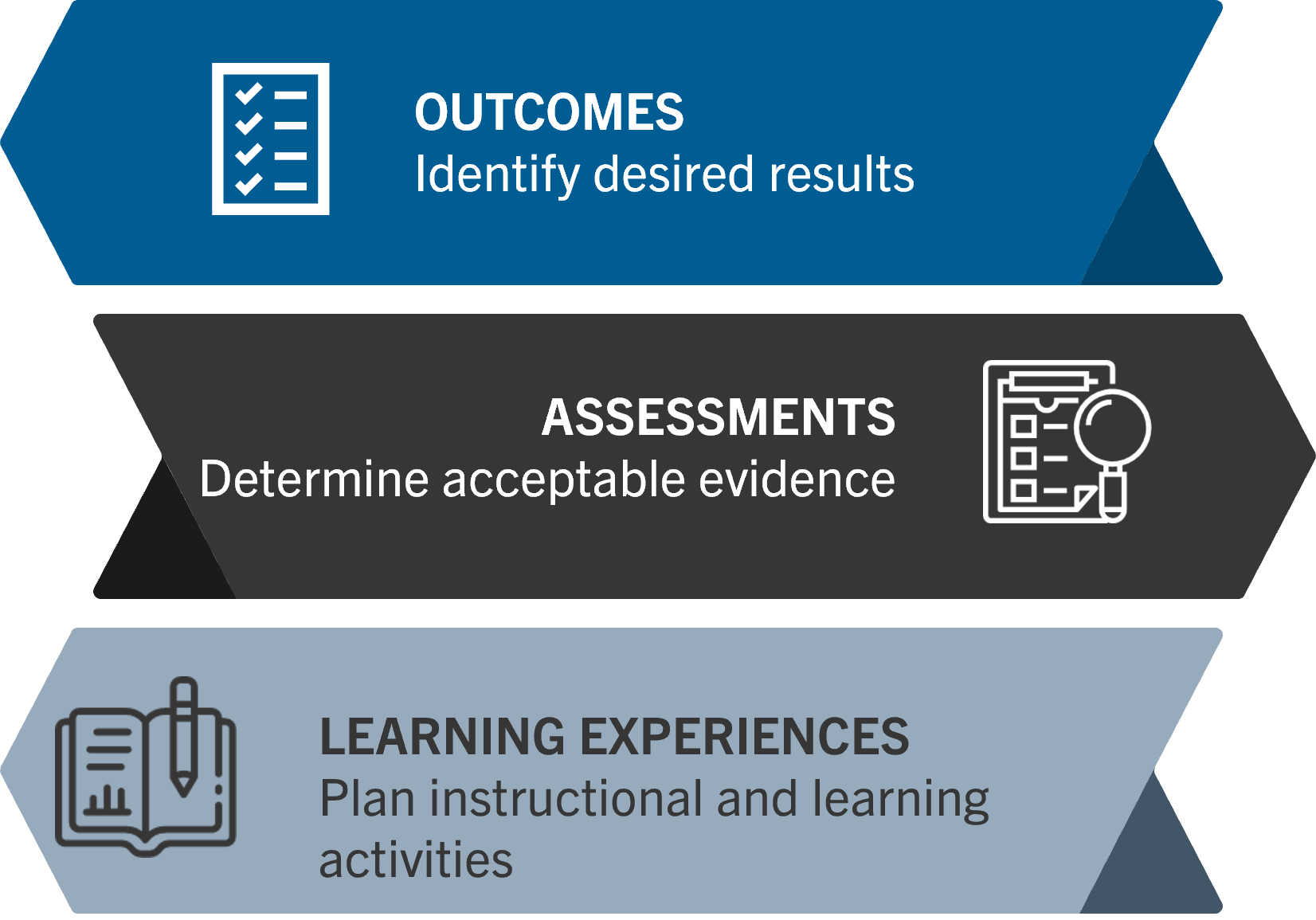
For the first time, it felt like none of my class was wasted; everything actually mattered. There was something a lot more satisfying about doing things this way. And I got to drool over Matt Dillon in the movie’s opening scene again and again and again. By beginning with the end in mind, teachers are able to avoid the common problem of planning forward from unit to another, only to find that in the end some students are prepared for the final assessment and others are not. When you’re creating your learning activities, make sure they’re engaging and effective to help students learn and remember.

Backward design lesson plan
Again, there are numerous strategies for enhancing students’ learning experience, and again, the ones you choose should align well with the goals you’ve defined for the course. For instance, exercises that are active and collaborative allow students to explore new concepts and idea in a relaxed way that encourages them to “own” them. Exercises designed to allow students to practice using new knowledge, or gain new skills, will give them a sense of mastery over the content that mere memorization cannot. Posing hypothetical questions or problems designed to allow students to apply new knowledge, or to practice newly acquired skills, will give them a sense of mastery that mere memorization cannot. This phase is essentially a way of helping you structure evaluative strategies into the course design so that you are able to gauge students’ progress towards the desired learning outcomes.
What to Read Next
On the Pursuit of Alignment (Opinion) - Education Week
On the Pursuit of Alignment (Opinion).
Posted: Wed, 08 Mar 2017 08:00:00 GMT [source]
The backward design approach to curriculum development first establishes educational goals and then builds assessment and instruction to serve those goals. The process of planning assignments and lessons by instructors to achieve pre-set instructional goals is called backwards mapping. Backward design is an educational approach that starts with learning outcomes and objectives. As an educator, you plan lessons and units by first thinking about what you want students to know and do by the end of the learning experience. Now it is time to plan the lessons, determine reading assignments, method of instruction, and other classroom activities to support student learning. With students’ needs in mind, instructors can choose the most appropriate methods to help their students achieve the learning objectives.
QUESTIONS TO ASK BEFORE SELECTING A CURRICULUM DESIGN COURSE
Backward design, also called backward planning or backward mapping, is a process that educators use to design learning experiences and instructional techniques to achieve specific learning goals. Backward design begins with the objectives of a unit or course—what students are expected to learn and be able to do—and then proceeds “backward” to create lessons that achieve those desired goals. In most public schools, the educational goals of a course or unit will be a given state’s learning standards—i.e., concise, written descriptions of what students are expected to know and be able to do at a specific stage of their education. Backward design, also called backward planning or backward mapping, is a process that educators use to design learning experiences and instructional techniques to achieve specific learning goals.
The Ultimate 2024 Summer Reading List for Professors
As the quote below highlights, teaching is not just about engaging students in content. It is also about ensuring students have the resources necessary to understand. Student learning and understanding can be gauged more accurately through a backward design approach since it leverages what students will need to know and understand during the design process in order to progress. Looking ahead to step two of backward design, you will need to identify evidence that an intended learning outcome has been obtained. If a learning outcome is not measurable, then we will not be able to know whether or not our course successfully achieved its goals.
Backward Design Model: Lesson Plans and Examples [PLUS: Free Lesson Plan Template]
So if we re-do this unit plan with backward design, we’ll need to start by developing an assessment that would measure success with that standard. That means the assessment would not be a test where students merely label the moon phases, but a student-developed model of the moon phases along with some kind of presentation where students use that model to explain lunar phases, eclipses, and seasons. If we assume that a large portion of a student’s grade is based on the test, then students are not being measured on their achievement of that standard.
Using anticipated learning outcomes for backward design of a molecular cell biology Course‐based Undergraduate Research Experience. Objectives, assessments and learning activities are three cornerstones of backward design. Wiggins and McTighe propose a framework called Six Facets of Understanding as a guide for building effective assessments.
Understanding Backward Design
Backward design in education is a lesson planning strategy that starts with the final assessment, then asks teachers to build their lessons toward that goal. This differs from transitional lesson design, in which teachers identify content they need to cover, build relevant lessons, then create the final assessment. Backward lesson design encourages teachers to be more intentional about their lesson plans and ensures that they make the best use of class time. Some teachers may fear that backward design emphasizes “teaching to the test,” which puts unfair pressure on students to learn for the sake of the final assessment. However, it is up to the skilled teacher to emphasize the process of gaining new knowledge, as opposed to acing the final test. While it can be difficult to grasp at first, backward design encourages educators to be intentional with their lesson planning, since it imbues the class time with a specific purpose.
Examples of Well-Crafted Learning Objectives
The emphasis was on “lectures” and “discussions” and the assumption was that learning largely consisted of a passive activity in which students received information and ideas from authoritative sources. Examples of summative assessments include exams, portfolios, presentations, written work. The inner circle identifies enduring understandings or big ideas that students should retain after they have forgotten many of the details (Wiggins and McTighe 1998, 9-10).
Teachers plan the required performance tasks and evidence of understanding. Performance tasks determine what students will demonstrate and what evidence will prove their understanding. In a sense, this is “teaching to the test.” But, in a subject with well-defined intended learning outcomes and assessments aligned with them, succeeding at these assessments is the evidence that students have met the subject’s goals.
When I taught seventh grade language arts, one of my favorite things to teach was S.E. After we did some reflecting, writing, and talking, we were ready to start the book. A unit or sequence of lessons framed around enduring understandings and essential questions. Identifying the desired results for students by establishing the overall goal/s of the learning sequence/unit using syllabus standards.
Therefore, backward design is an effective way of providing guidance for instruction and designing lessons, units, and courses. Once the learning goals, or desired results, have been identified, instructors will have an easier time developing assessments and instruction around grounded learning outcomes. Because “beginning with the end” is often a counterintuitive process, backward design gives educators a structure they can follow when creating a curriculum and planning their instructional process. This process is often likened to a roadmap as the learning destination is chosen first, followed by the planning of the route, which in this case are the lesson plans. This focuses on promoting a better understanding of the content or processes to be learned for students. The educator is able to focus on addressing what the students need to learn and what types of data can be collected to show that the students have reached the desired learning outcomes.

No comments:
Post a Comment